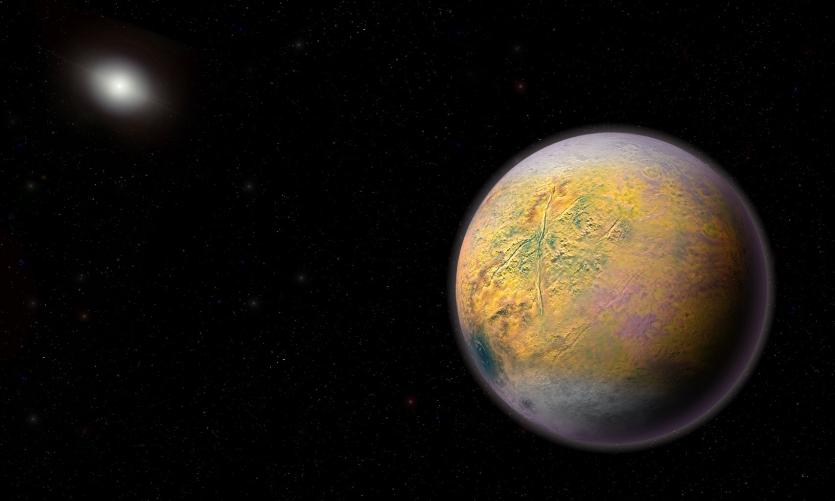The Goblin dwarf planet appears to be under the gravitational influence of a giant unseen object, possibly a hypothetical massive planet referred to as Planet Nine. Photograph: Illustration by Roberto Molar Candanosa and Scott Sheppard/Courtesy of Carnegie Institution for Science
 OCTOBER 2nd, 2018
OCTOBER 2nd, 2018
By Patryk Krych | The World Daily
New planetary discovery; ‘The Goblin’; could lead to discovery of a super planet
As of recent, a new dwarf planet had been discovered and appropriately named ‘The Goblin’ (with its formal name, given by the International Astronomical Union’s Minor Planet Centre, being 2015 TG387), whilst astronomers were searching for a different space phenomenon – a planet of theoretically enormous proportions named Planet 9. What’s more, the elongated orbit of The Goblin may be an indicator of Planet 9’s existence.
The discovery, amazingly enough, was made in the dormant Mauna Kea volcano in Hawaii using the Japanese Subaru 8-meter telescope, a telescope famous and well-known for being able to scan a wide field of vision whilst also giving great detail of the observed objects at the very edges of our solar system.
The name, as detailed by David Tholen, from the University of Hawaii, as well as a member of the observing team; is not only due to its small size, but also because “human examination of the candidate slow-moving objects occurred in roughly the Halloween time frame.”
The discovery of the dwarf planet has been deemed a “great discovery indeed” by Konstantin Batygin; the assistant professor of planetary science at Caltech, and a part of the team searching and theorising about the theoretical Planet 9. After the discoveries of two other space objects –‘Sedna’, and ‘2012 VP113’, in close proximity to The Goblin, it is being theorised that they are all part of the very same cluster and are orbiting a massive object – the hypothetical Planet 9.
The Goblin itself is thought to be an icy planet, having such an abnormally elongated orbit with no viable star heat sources, and being 2 and a half times farther from the Sun than our very own Pluto. It’s also been thought that with such a distance, it takes the dwarf planet at least 40,000 years to move around and past our Sun before starting its long journey back to the supposed Planet 9.
“Despite centuries of surveys, our understanding of the solar system remains incomplete,” Batygin said, “This certainly adds to the growing ledger of… objects that show Planet Nine’s influence,” speaking of course in regards to the other two recently discovered space objects, and on the possibility of any future discoveries of the same sort.
Another member of the team - Scott Sheppard, of the Carnegie Institution for Science in Washington, stated that; “We are only just now uncovering what the very outer solar system might look like and what might be out there,” intrigued by the growing number of dark, exotic discoveries in the thus hardly known parts of the universe, “We believe there are thousands of dwarf planets in the distant solar system. We are just seeing the tip of the iceberg right now.”
In regards to the telescope used for the discovery, Sheppard continued; “With other large telescopes, it is like looking through a straw and thus they are good for observing things you know are there, but not for finding new things as their field of views are too small for covering large areas of sky.”
Search for the elusive Planet 9 will continue soon, with now much larger certainty of its existence present within the team. They intend to find many more objects along the way, purely for the sake of science and discovery, this coming November.
By Patryk Krych | The World Daily
©2018 THE WORLD DAILY






